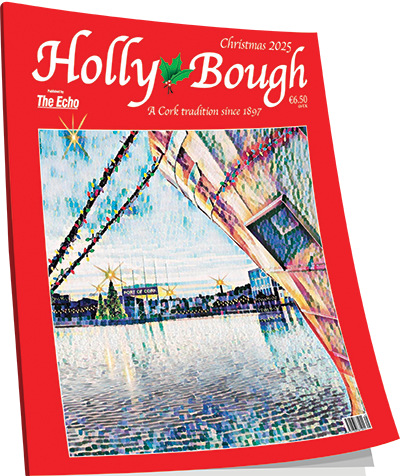John Arnold: Clan return to Cork to recall an ancestor put to death in 1720
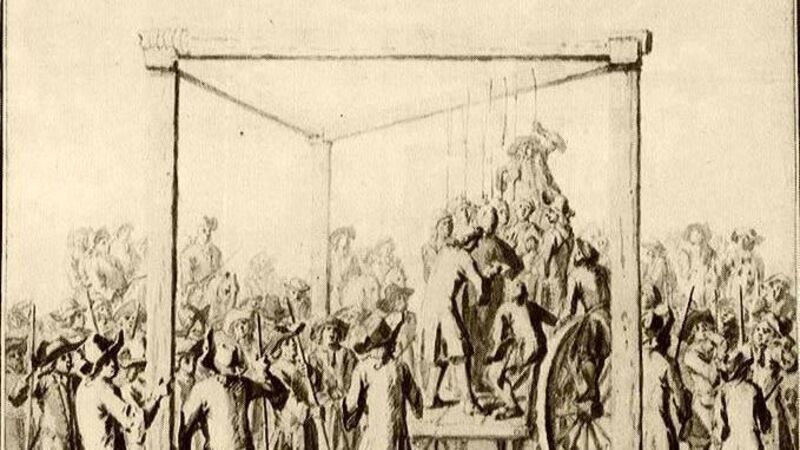
An illustration of a public execution in London in 1726 - James Cotter was hanged in Cork in 1720 for a ‘crime’ he never committed, says John Arnold
There are so many interpretations to those four words, and they can mean different things to different people in various walks of life.
Between Rathcormac and Fermoy is Corrin Hill -just over 700ft to its summit. A famous landmark in these parts, several writers from the Middle Ages down to the present day referred to it as ‘The storied Hill of Corrin’.
Strange, isn’t it, how people and places far removed both in geographical terms and by the span of centuries can often by connected by a thread of myth, tradition or even chance.
There’s a beautiful line in the song Come By The Hills - the stories of old fill the heart, and may yet come again’.
Passing by Corrin with its crown covered in mist last Tuesday evening, I was pondering over a legend of how the hill got its name and a link with a group of 11 American visitors who are coming to Ireland tomorrow.
All the one clan, Cotters, they too have a link - tragic and life-ending - with Corrin.
About 300 years before St Patrick came to Ireland, the country was ruled over by a myriad of local kings - some had huge swathes of territory under their control, others much less.
What we might call south ‘Munster’ was the domain of Tigherna Tethanac Mac Lucta (’twould be a mighty long name on a coin or a postage stamp!). He was buried on the hilltop, and a mighty ‘cairn’ of stones was piled over his grave, as befitted one of his kinship and nobility.
Thus came into being the name given to the hill overlooking Fermoy, ‘Cairn Tighearna’. Over the centuries, this was shortened and Englishified to Corrin Hill.
In the 1830s, excavations took place on the hilltop. A chamber with two graves was discovered - one burial place held a broken urn. This may well have the spot where Tighearna was interred 1,800 years previously.
The chieftain at the time had a young son of four or five - his heir. In a troubled dream he dreamt the little boy was cursed and drowned. In order to ward off such a happening, he ordered that a stone fort or ‘rath’ be built on top of Corrin Hill - far away from stream, river, lake or sea.
Stone masons were two a penny at the time so the work commenced quickly. One day, the chieftain went to the building site to see the progress. His little boy came with him.
While he was being shown the building work, the child wandered away. He saw a barrel full of water and, standing on a large stone, he looked in and seeing his own image he reached in to touch the ‘boy inside’ – he fell into the barrel and was drowned.
The chieftain, in the very act of trying to raise his son ‘like his father’, found the opposite happening.
From chieftains of ancient times, we come to the 1600s and the powerful and influential Cotter clan of Ballinsperrig, near Carrigtwohill in East Cork.
I wonder what is the exact opposite of ‘Like father, like son’, because if a father and son could have polar opposite beliefs and outlooks then Sir James Cotter and his son James Junior were such a pair.
James Cotter was born in 1630 and rented land from the Earls of Barrymore - of Castlelyons and Barryscourt fame. He pursued a military career in England and on the continent.
When King Charles I of England lost his head in 1649, the monarchy was literally ‘in exile’, with Oliver Cromwell’s Republican regime in charge. Cotter backed the Restoration of Charles II and was well rewarded for doing so. He was given Officership in the Royal Guard.
In August, 1664, along with Myles Crowley and John Riordan, Cotter travelled to Lausane in Switzerland. They were on the trail of John Lisle who was closely linked to the execution of Charles I. Lisle was shot dead and Cotter and his comrades made good their escape.
After a spell in charge of the Leeward Islands for the Crown, Cotter came back to Cork. In the 1680s he acquired further tracts of land at Castlelyons and in the Rahan/Ballymagooly area near Mallow. He was knighted for his loyalty to the King - Sir James Cotter.
After his first wife died, Cotter wed, at the age of 58, Ellen Plunkett of the noble Co. Louth family. Their first child James was born in 1689.
The couple had seven children but just three survived infancy - James, Laurence and Marie.
Sir James Cotter soldier, Royalist and extensive landowner, died in 1705 and was buried in Carrigtwohill. He had remained a Catholic and seemed to have had cordial relations with his Protestant neighbours.
His son James was just 15 when his father died. Under the prevailing Penal Laws he was to be educated as a Protestant. This led to a see-saw of pulling and tugging to determine the boy’s future.
Young James Cotter wed Margaret Matthew of Thurles when he was just 17 or 18. A headstrong, determined young man, Cotter, unlike his ‘loyal’ father, was determined to oppose the Penal Laws and restore James, ‘the pretender’ to the English throne.
Sir Alan Brodrick (of the Lord Midleton family) was appointed English Chancellor and became a bitter adversary of Cotter. In August, 1718, an alleged occurrence near Carn Thierna in Fermoy would have terrible consequences for James Cotter.
On that occasion, he was returning from Dublin to his home. At Barry’s Inn in Fermoy, where he was partaking of sustenance, he met a Miss Elizabeth Squibbs, a Quaker lady from Cork city. She travelled on horseback, accompanied by a servant.
On leaving the inn, Miss Squibbs complained to Cotter that she had been ‘ravaged’ by a person unknown to her. None of Cotter’s business, you may well say.
Well, she travelled on to Cork the next day -having overnighted in Rathcormac. Things rested so and in Cork Miss Squibbs made no complaint or report of any violation to her person.
About a week later, Edward Fenn, a prominent Cork Quaker, was told of ‘the Fermoy affair’. He induced Miss Squibb to make a complaint against Cotter. She now claimed James Cotter pulled her off her horse at Carn Tierna ‘and raped her’.
James was stunned at the false allegations but, as an innocent man, he felt no jury would convict him. He handed himself in, expecting a fair trial. Unfortunately, the Orange faction in Cork - some bent on getting revenge for Cotter’s father’s role in the killing of John Lisle - determined ‘to get their man’. He was refused bail and kept in prison.
The trial was postponed several times - on one occasion sufficient jurors were not present as the Court room door was locked to keep them out! Eventually, the trial went ahead and James Cotter was convicted and sentenced to death.
There was outrage amongst the Catholic population. Many letters seeking clemency for Cotter were submitted - including from Sir Alan Brodrick’s wife, Lord Barrymore and Mrs Squibbs - mother of Elizabeth. A deaf ear was turned to all of these.
On Tuesday, May 7, 1720, 31-year- old James Cotter was hanged in Cork. The next day his body was interred in the family vault in Carrigtwohill. The Cotter family moved to a new home at Rockforest, near Mallow.
In 1763, James Cotter, son of the executed James, was created a Baronet – ‘like father, like son’ - no!
This weekend, 11 members of the Cotter family will be back ‘home’ in Ireland. All are related to James, who was wrongly executed in 1720 for a crime that never took place at Carn Tierna near Fermoy.
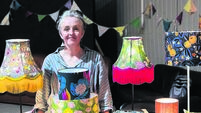

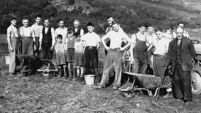
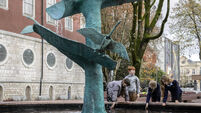

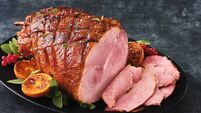
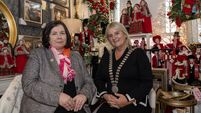
 App?
App?



